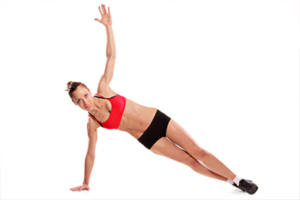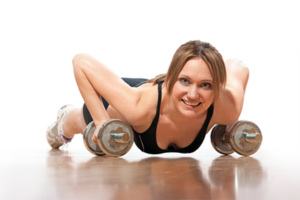 In our last T School Intensive discussion about the importance of keeping track of your food, exercise and sleep, one of our participants asked how best to record our exercise calories burned in the MyFitnessPal app.
In our last T School Intensive discussion about the importance of keeping track of your food, exercise and sleep, one of our participants asked how best to record our exercise calories burned in the MyFitnessPal app.pre-requisites. When considering the effects of exercise, it’s important to not focus solely on the total calories burned during the activity, but to consider the overall metabolic effect on your body.IS IT REALLY ABOUT CALORIES IN AND CALORIES OUT? NOT EXACTLY.
While more calories may be burned in cardio session than a resistance training session, the long term results of that resistance training session may have the greater impact on fat loss because you are building and maintaining muscle mass, your metabolic furnace. The best fat burning workout option is interval training which combines cardio and resistance exercises performed at an intensity level that takes you outside of your comfort zone with periods of rest and recovery. This creates what is called the EPOC effect.

Similar to how a car’s engine remains warm after being turned off, once a workout is over and you’re back in your daily routine, your body’s metabolism can continue to burn more calories than when at complete rest. This physiological effect is called excess post-exercise oxygen consumption, or EPOC. Also known as oxygen debt, EPOC is the amount of oxygen required to restore your body to its normal, resting level of metabolic function (called homeostasis). It also explains how your body can continue to burn calories long after you’ve finished your workout.
Your metabolism is how your body converts the nutrients you consume in your diet to adenosine triphosphate (ATP), the fuel your body uses for muscular activity. ATP is produced either with oxygen using the aerobic pathways or without oxygen relying on the anaerobic pathways. When you first start to exercise, your body uses the anaerobic energy pathways and stored ATP to fuel that activity. A proper warm-up is important because it can take about five to eight minutes to be able to efficiently use aerobic metabolism to produce the ATP necessary to sustain physical activity. Once a steady-state of oxygen consumption is achieved, the aerobic energy pathways are able to provide most of the ATP needed for the workout. Exercise that places a greater demand on the anaerobic energy pathways during the workout can increase the need for oxygen after the workout, thereby enhancing the EPOC effect.

The body is most efficient at producing ATP through aerobic metabolism; however, at higher intensities when energy is needed immediately, the anaerobic pathways can provide the necessary ATP much more quickly. This is why we can only sustain high-intensity activity for a brief period of time—we simply run out of energy. HIIT works because during high-intensity exercise ATP is produced by the anaerobic pathways; once that ATP exhausted, it is necessary to allow ATP to be replenished. The rest interval or active-recovery period during an anaerobic workout allows aerobic metabolism to produce and replace ATP in the involved muscles. The oxygen deficit is the difference between the volume of O2 consumed during exercise and the amount that would be consumed if energy demands were met through only the aerobic energy pathway.
EPOC IS INFLUENCED BY THE INTENSITY, NOT THE DURATION OF EXERCISE.
Higher intensities require ATP from anaerobic pathways. If the ATP required to exercise at a particular intensity was not obtained aerobically, it must come from the anaerobic pathways. During EPOC, the body uses oxygen to restore muscle glycogen and rebuild muscle proteins damaged during exercise. Even after a HIIT workout is over, the body will continue to use the aerobic energy pathway to replace the ATP consumed during the workout, thus enhancing the EPOC effect.
RESEARCH HAS SHOWN THAT RESISTANCE TRAINING CAN PROVIDE A GREATER EPOC EFFECT THAN RUNNING AT A STEADY SPEED.
In an extensive review of the research literature on EPOC it was concluded that resistance exercise produces a greater EPOC response than steady state cardio exercise. For example, one study found that when aerobic cycling (40 minutes at 80 percent Max HR), circuit weight training (4 sets/8 exercises/15 reps at 50 percent 1-RM) and heavy resistance exercise (3 sets/8 exercises at 80-90 percent 1-RM to exhaustion) were compared, heavy resistance exercise produced the biggest EPOC.

At this point, we are not able to share set kcal burn for different workouts in the myfitnesspal app, but you can each individually import the estimated kcal burn in the attached “cheat sheet” that I created. Please keep in mind that this is just an estimate of kcal burned as I used the following parameters to run the calorie burn calculations:
The participant is female, 50 years old and weighs 145 lbs. To get a more accurate count for your personal workouts you will need to visit one of the calorie calculator sites listed below and enter your personal stats.
You will notice the greatest number of calories might come from cardio and interval training classes but all resistance training (ie Mat, Ball and Pilates equipment workouts) are helping you build and maintain muscle which determines your ability to burn calories not only during exercise but at rest. Further, over training, or doing too much exercise in the name of burning more calories undermines your ability to maintain muscle mass and may actually sabotage your best results.
DON’T FIGURE EXERCISE CALORIES BACK INTO YOUR TOTAL DAILY CALORIES
The other thing that people are tempted to do when looking at calories burned by exercise is to think they can add them to the total number of calories they consume per day. This is incorrect and most folks only slow down or sabotage their fat loss goals by “eating them back on.” Do not make this mistake; instead look at the exercise calories your burn daily as a way to propel your progress and not simply a way to justify eating more food.
To calculate your own kcal burn doing different types of exercise, explore the following resource links:
- Calorie Control
- Pro Health Calorie Calculator
- Fun Calorie Burn
- Health Status (This is the one I used but you can experiment for yourself)

It all comes back to journaling about the kind of exercise that you LIKE and WILL DO, and HOW YOU FEEL after doing it. Consistency in your habits, including the foods you choose to eat daily, the movement you engage in and the commitment to getting quality sleep is what matters.
Your body isn’t a math calculation and although it’s important to have guidelines to work within, your awareness and connection to your daily choices is what will transform your body, body composition and your life.
